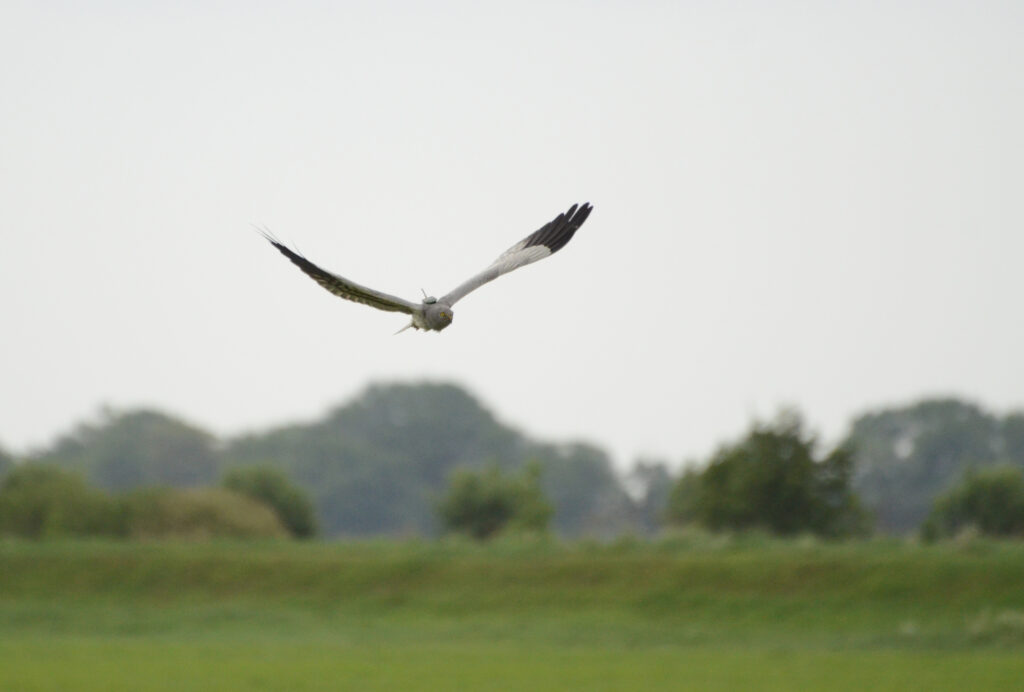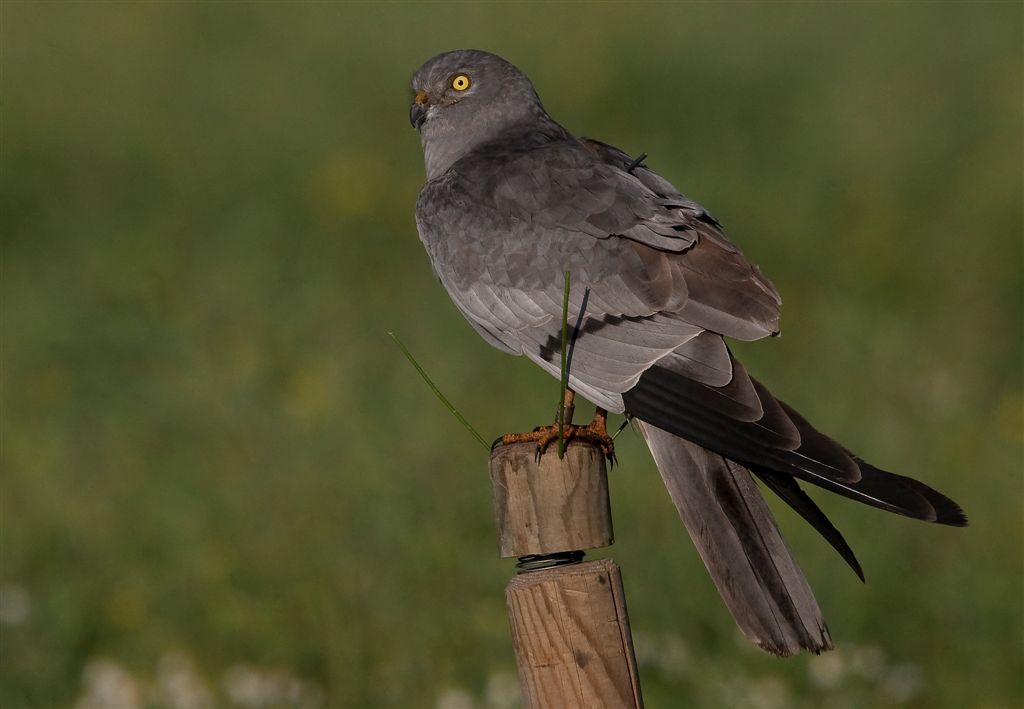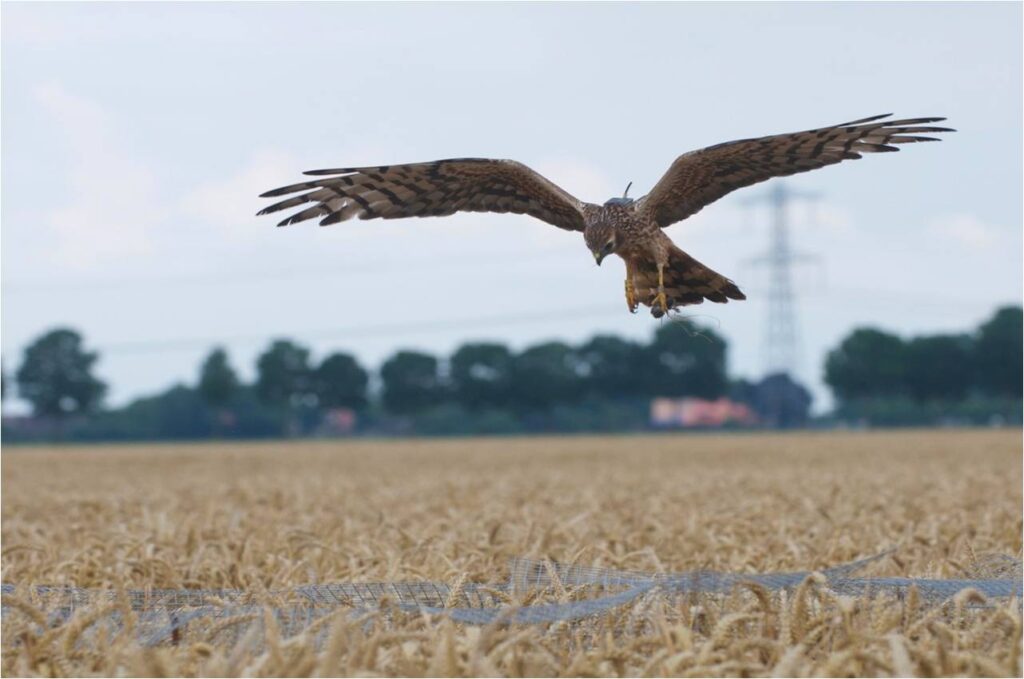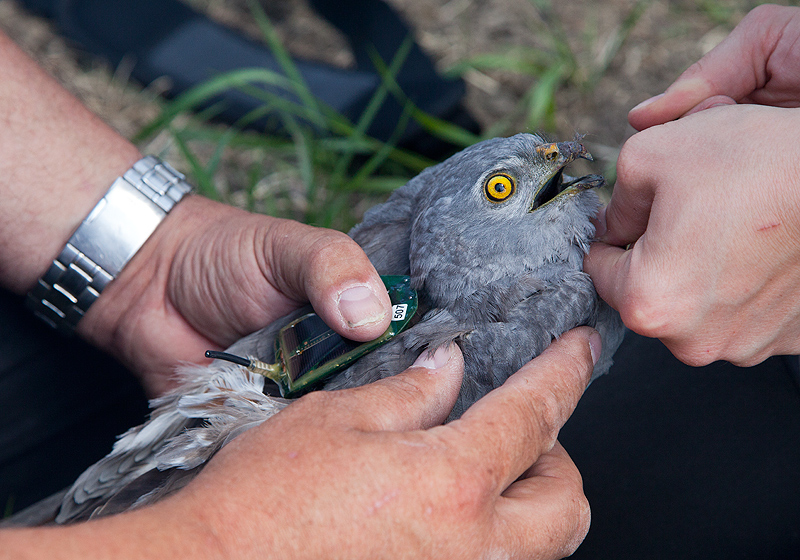
The Dutch Montagu’s Harriers foundation started in 2005 with satellite tracking with aimed research to fill out conservation efforts for the Montagu’s Harriers (Circus pygargus) outside the breeding areas. In that year the first two satellite transmitters were deployed. In 2005-2010 a total of 44 Montagu’s Harriers were fitted with satellite transmitters in the Netherlands and several other countries. Satellite tracking revealed migration strategies and wintering areas, and it has indicated the importance of stop-over sites for migration success. Satellite tracking is a suitable tool to describe movement patterns on a large scale but the accuracy is insufficient to gain precise knowledge on movement behaviours and habitat use.
Twelve adult Montagu’s Harriers were trapped in 2009 to 2011 in Eastern Groningen and two in Denmark and released with a 14-gram UvA-GPS logger. The first GPS-logger birds (both males) returned in spring 2010 with approximately 40.000 reliable data points. This exceptional amount of data already revealed some interesting facts. In only two days time, one of the birds migrated 1.250 km without resting at night. Furthermore, its spring migration route deviated from the autumn route; it clearly avoided certain areas, and the data also showed that the bird had social contact with other Montagu’s Harriers during its journey. Combining GPS-logger data with for example land maps and weather conditions will enable us to find out what factors determine migration routes.

Besides migration, GPS-loggers also shed light upon the detailed structure of wintering home ranges and the function of specific stop-over sites. It is now known that in the wintering areas Niger, Mali and Senegal Montagu’s Harriers tend to stay in farming areas as they do in Europe. In both Africa and Europe GPS-loggers allow us to study habitat use in relation to different land-use and conservation strategies. In the Netherlands logger-birds showed that home ranges are much larger than previously thought and hunting trips of 280 kilometres per day are no exception. This year, another six birds will be captured and fitted with a logger to expand our working range. In Denmark we will again trap four males for our project.
The Dutch Montagu’s Harrier foundation is the only organisation in Europe that follows their birds of study year-round. This way of conducting research results in unique knowledge of this migratory bird and allows good cooperation with and education of local farmers and conservation scientists. In the Netherlands our effort has been rewarded with an increase in breeding population from 3 pairs in 1987 to more than 60 pairs in 2011. The GPS-loggers show that modern techniques provide exciting new insights in the ecology of a species and they will certainly help us to improve our conservation strategies in farmland-areas in Europe and Africa.
More information can be found on: werkgroepgrauwekiekendief


Contact persons, funders and participants
Ben Koks, Werkgroep Grauwe Kiekendief, ben.koks@grauwekiekendief.nl
Willem Bouten, University of Amsterdam Institute for Biodiversity and Ecosystem Dynamics / Instituut voor Biodiversiteit en Ecosysteem Dynamica (IBED) w.bouten@uva.nl
Related publications
Trierweiler C. (2010). Travels to feed and food to breed. The annual cycle of a migratory raptor, Montagu’s harrier, in a modern world. PhD Thesis: Animal Ecology Group, Centre for Ecological and Evolutionary Studies (CEES), University of Groningen; Institute of Avian Research “Vogelwarte Helgoland”, Wilhelmshaven; Dutch Montagu´s Harrier Foundation. Trierweiler C. & Koks B.J. (2009). Montagu’s Harrier Circus pygargus. In: Living on the edge: Wetlands and birds in a changing Sahel (eds. Zwarts L, Bijlsma R, Kamp van der J & Wymenga E). KNNV Publishing Zeist, NL.
